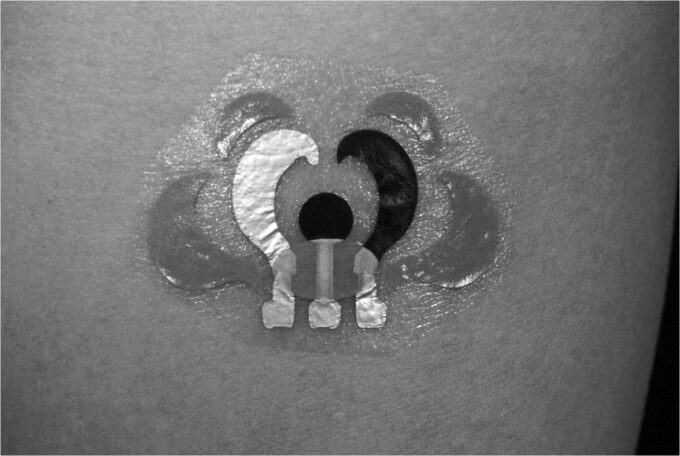High-tech ink with sensory effect
Nanotechnicians at the University of California, San Diego, have developed inks that anyone can use to draw sensors. The inks react with various chemicals such as glucose. The potential applications are vast and range from measuring blood sugar to detecting explosives.

"Sensor ink" being developed in the US could easily index industrial chemicals and other harmful agents.
The team led by Joseph Wang, head of the Institute for Nanotechnology at UCSD, has experimented with temporary tattoos for measuring blood glucose in the past. They used an ink that reacts to glucose, but still had to be written on a material with built-in electrodes. The current development goes one step further, because the ink itself acts as an electrode.
The team also made sure that the high-tech ink was harmless to humans and plants, and that it would remain truly usable even if stored for a long time.
Potent mixture
To meet the requirements, the team relies on a sophisticated mixture of materials. The high-tech ink contains polyethylene glycol as a binder, graphite powder for electrical conductivity and the antibacterial active ingredient chitosan, which helps the ink to adhere to various surfaces. The sugar substitute xylitol, known for example from chewing gum, in turn serves in the mixture as a stabilizer for those enzymes that actually react with the chemicals to be detected and thus ensure the actual function of the sensors.
"Our new biocatalytic pen technology, which is based on novel enzymatic inks, shows promise for a wide range of applications," Wang said. In addition to blood glucose measurement using sensors placed on the skin, it includes, for example, the detection of environmental toxins and harmful chemicals.
Much development potential
In tests, the researchers drew a sensor designed to detect the industrial chemical phenol onto leaves. With appropriate changes to the ink mixture, something similar should also work for heavy metals or pesticides. Researchers could also detect nerve agents or explosives in this way. Wang's team recently presented the current state of development of the sensor ink in the journal "Advanced Healthcare Materials" under the title "Biocompatible Enzymatic Roller Pens for Direct Writing of Biocatalytic Materials: 'Do-it-yourself' Electrochemical Biosensors".
However, it will be some time before sensor pens are really widely used. Among other things, the researchers still want to work on connecting the sensors wirelessly to suitable measuring devices. They also want to research how well the development works under unfavourable environmental conditions such as extreme temperatures, fluctuating humidity or prolonged exposure to sunlight. (Source: Press release)









